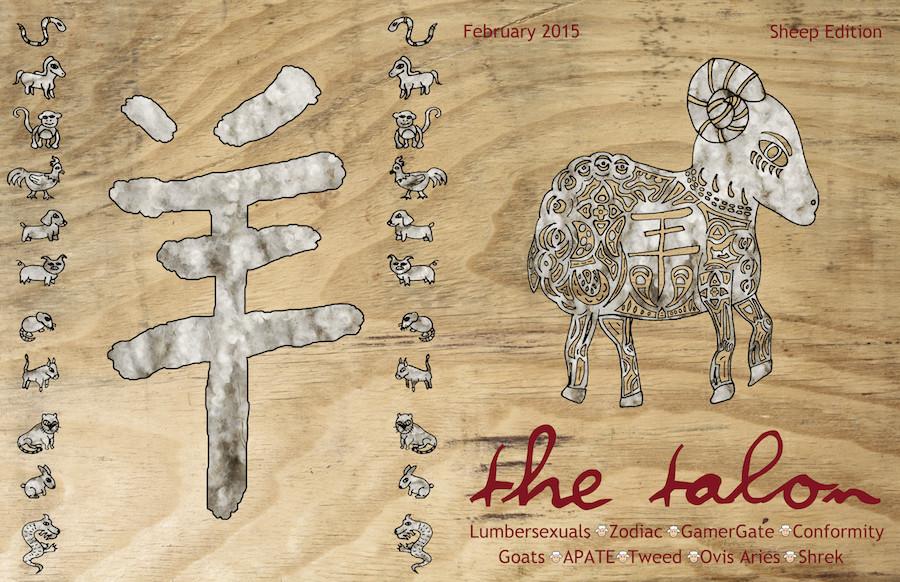Five things I learned: designing The Talon cover
Two weeks prior to the end of the first semester, I volunteered for a job I’d never attempted before: design a magazine cover. I’d always admired the creative designs students produced for past covers of the Talon’s print editions. Looking back at old editions such as the Video Game edition’s dark retro-style (Edition 97) and the End of the World’s beautiful use of color (Edition 93), it was clear I had taken on a heavy load.
Early in the process, the Talon staff agreed on the new print edition’s theme: sheep. This decision was made because—according to Chinese astrology—2015 is the Year of the Sheep. Julia Lee was my partner on this project, and we both agreed that a simple Chinese New Year theme wouldn’t suffice. Therefore, Julia and I decided to add a certain Art Nouveau twist to it, playing with industrial column-like layouts and intricate details, common techniques employed by artists of that art movement. This two-month artistic endeavor taught me lessons that I’ll never forget. Here are the five most important, which could be adapted to different situations that you might find yourself in:
1. Quantity does matter.
To be a designer, you need to be creative. Julia and I shot down ideas faster than we could brainstorm them, so make sure there are enough ideas to think through. Ideally, all members of the team need to agree so that there’s unwavering support behind the initial idea. Share ideas openly so the team can work together to develop and make them into full-fledged designs.
2. Ensure the entire team is excited about the project.
Motivation is essential. Without it, no work will be done. Do not be afraid to use new technology to liven up otherwise boring steps. For example, I used a graphics tablet to draw details on the cover’s sheep. By using a tablet, I provided myself some extra motivation to keep working. I wanted to learn more about the flat, gray machine, and I needed to master it. Thus, I drew much faster and more efficiently, proving technology can be extremely useful.
3. Communicate with the rest of your team.
This cannot be stated enough. On my project, be it with Julia, the Editors-in-Chief, or Pfeifferberg, communication greatly guided me through this previously alien process. Constant emails and Facebook messages allowed me to synthesize new design ideas once everyone concurred; quick messages to my team members cleared up any doubts I had, kept me on track, and took me a step closer to finishing the cover. When needing assistance or wanting to complete a large task, do not be afraid to reach out to team members.
4. Do not take on more than you can handle.
Do not drown yourself in a sea of work. Before agreeing to take on a project, consider your other work and weigh the pro’s and con’s of tacking another project onto your already busy schedule. I knew I would view making the cover as more fun than stressful, so I had no reservations with adding this to my workday. Besides, I had two months to finish it, it seemed like forever! So . . .
5. Procrastination is actually fine.
We all naturally procrastinate. We cannot help it, right? After the initial brainstorming session, you might find yourself at a standstill. Getting ideas into your head is easy, but putting them down concretely proves to be much trickier. Some people work better under stress, which is absolutely fine. Was it difficult working on the cover for eight hours, making last minute changes on the day it was due? Yes. But would it have come out better if I had done it beforehand? I do not believe so, since the last day was the most productive one for me. I knew the cover was due, and this fact propelled me to work like my Talon career depended on it. Do not be afraid of stress. Use it to your advantage to finish your project.
Most importantly, keep the project’s goal in mind. Working with a new form of media is fun, but it is important in the end to make sure the job is being done to the highest level possible.

In his second year in the Talon, Yoji managed to rise to the top of the Entertainment ranks, where he was once a lowly reporter. Yoji now plans to rule...









